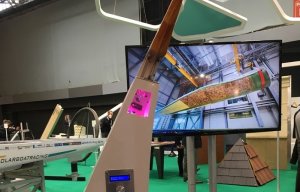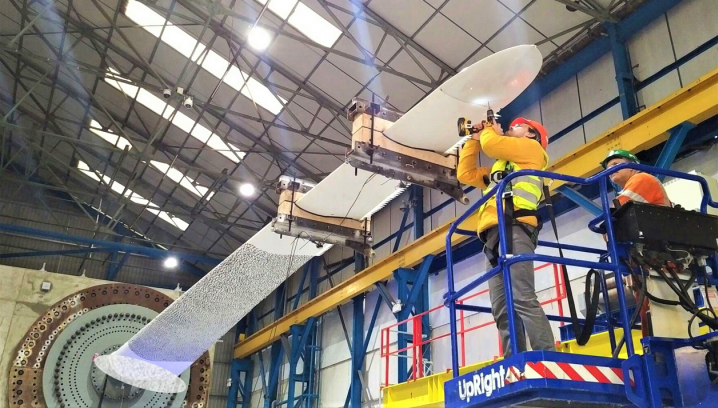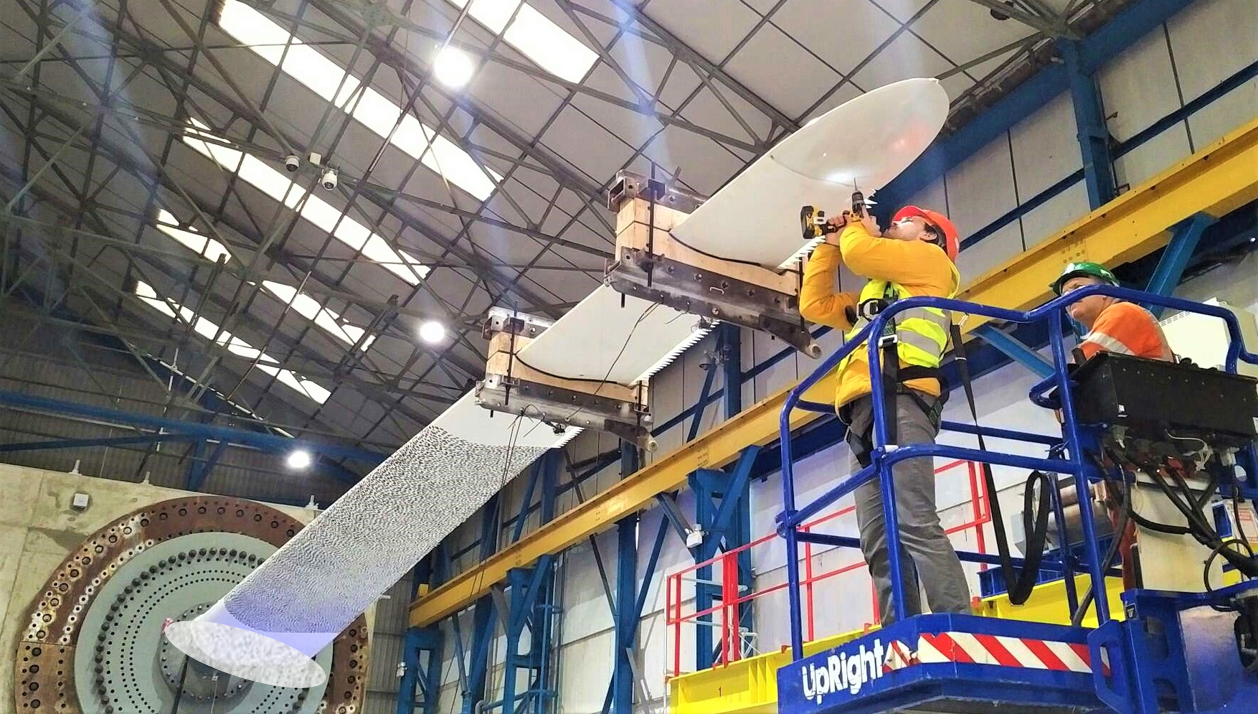
Smart wind turbine blade receives award
The new technology involves replacing the heavier glass fibre design traditionally used for wind turbine blades with a lighter composite structure, wrapped in a sail-like textile

3rd July 2020
Innovation in Textiles
|
Glasgow, Scotland
 © NMIS.
© NMIS.
The Lightweight Manufacturing Centre (LMC), part of the National Manufacturing Institute Scotland (NMIS), operated by the University of Strathclyde, is working with a consortium on an Innovate UK funded project to develop an ultralight and sustainable wind turbine blade that will produce up to 9% more energy than conventional blades.
Developed by Edinburgh based ACT Blade, the new technology involves replacing the heavier glass fibre design traditionally used for wind turbine blades with a lighter composite structure, wrapped in a sail-like textile.
The LMC, together with the University of Sheffield’s Advanced Manufacturing Research Centre (AMRC) and the Offshore Renewable Energy (ORE) Catapult, is supporting ACT Blade to develop the blade and bring it to market.
A lighter blade allows for 10% more length, which, in turn, generates up to 9% more energy from the same wind turbine. The technology could be a disruptor for the offshore wind industry, helping to make offshore wind – already one of the cheapest forms of large-scale energy generation in the UK – even cheaper and easier to harness.
Professor Iain Bomphray, Director of the Lightweight Manufacturing Centre, said: “This is the first of its kind in the world. ACT Blade has developed an entirely new type of blade made of composite materials and a textile shell that offers significant cost and sustainability benefits. Manufacturing costs are also 30% lower than for conventional blades and they don’t require finishing and painting, which is a time consuming and polluting process. The blade is also partly recyclable.
“We were keen to apply the lightweighting expertise and experience we have here at the LMC to the ACT Blade concept, also helping the team to design, test and ultimately manufacture this innovative technology.”
The prototype was completed in February this year and in April, ACT Blade announced that it had successfully completed static tests at ORE Catapult’s National Renewable Energy Centre in Blyth. The blade is now undergoing testing of one million cycles in each direction, with ORE Catapult engineers monitoring its performance.
Dr Sabrina Malpede, ACT Blade CEO, said: “This ultralight blade has the potential to be completely disruptive to the renewables sector, allowing for substantial cost savings and increased production of wind energy. Working with the LMC has allowed us to tap into its composite capabilities and take our ACT Blade concept from design through to manufacture. Now, we need to see how it performs in a real environment.”
Lightweighting refers to the process of making products or parts lighter to reduce costs, energy expenditure and carbon emissions. The principles are of interest across multiple sectors from aerospace and automotive to defence and renewables.
Technical Lead at the AMRC Composite Centre and part of the team that worked on the development prototype blade alongside High Value Manufacturing (HVM) Catapult colleagues at the LMC, John Halfpenny said: “Through cross-Catapult collaboration we have applied our leading expertise in lightweighting, advanced technologies, composites design and manufacture allowing us to take ACT Blade’s innovative idea and develop and improve the design to increase strength, stiffness and stability of the blade, and assist with the novel manufacturing process.”
Iain Bomphray added: “Wind energy is a natural energy source but even this clean energy source can be made even more sustainable still, by reducing the carbon footprint associated with the manufacture and transport of parts and by making the harnessing of the energy more efficient.”
“The LMC was established as a centre of excellence for innovative lightweight solutions, with the aim of helping manufacturing businesses large and small to overcome the challenges of the modern world. Our cross-Catapult collaboration working with ACT Blade on this exciting technology has allowed us to do exactly that.”

Business intelligence for the fibre, textiles and apparel industries: technologies, innovations, markets, investments, trade policy, sourcing, strategy...
Find out more